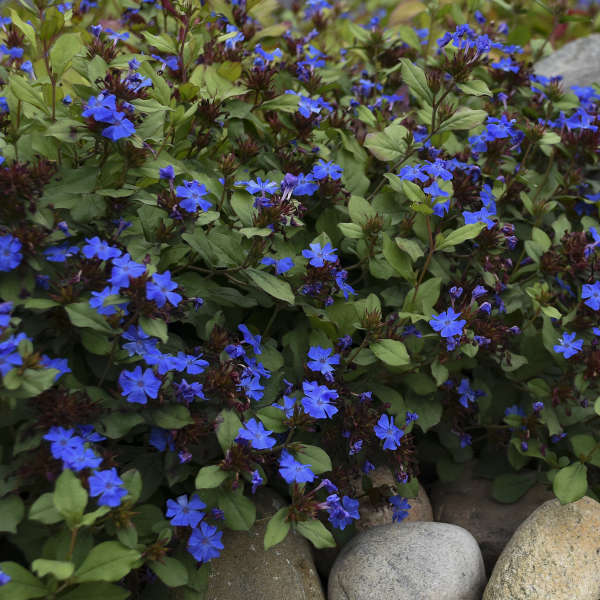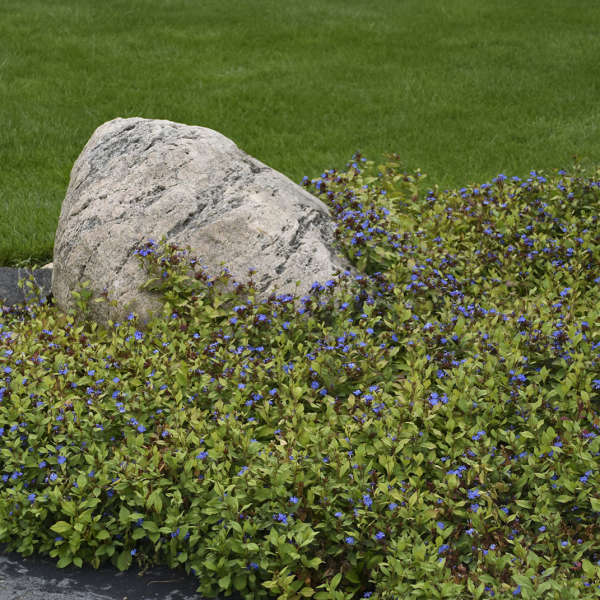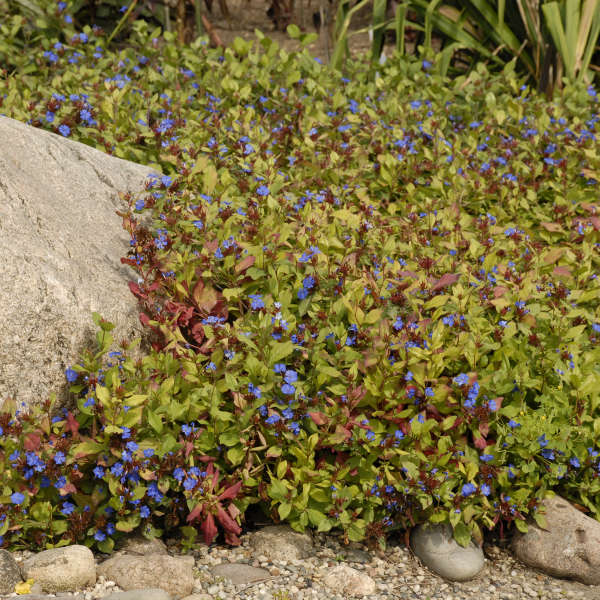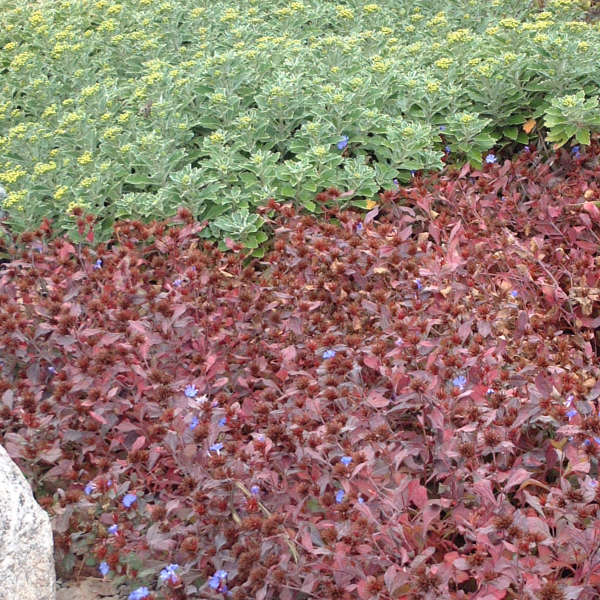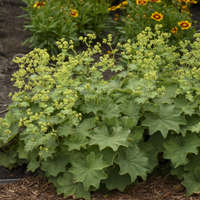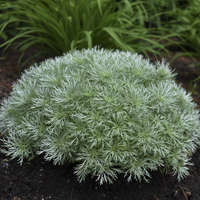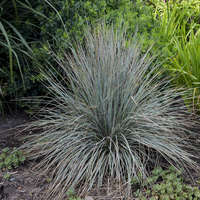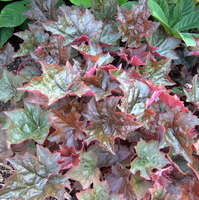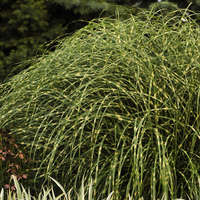Ceratostigma plumbaginoides
Common Name: Plumbago, Leadwort
A groundcover that provides interest in late summer, after many other perennials are finished blooming, Leadwort is hard to beat. The foliage is green during the summer, then turns a beautiful bronzy-red in fall. It provides the perfect backdrop for the brilliant gentian blue blooms which are present from late summer until the first hard frost.
Use Leadwort as an underplanting to shrubs or large perennials or allow it to ramble over small rocks. Any way you use it, Leadwort will be a dependable, long-lived perennial.
